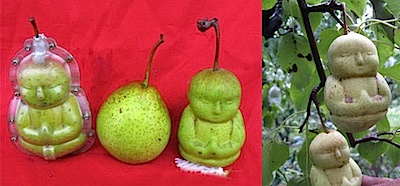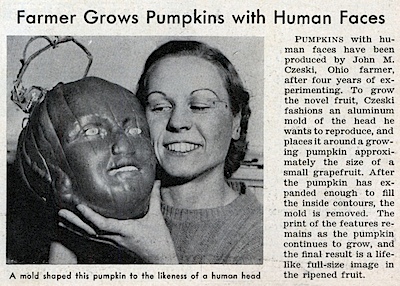- A letter makes some very important points about bananas in Africa. There’s a huge back-story to this, but we’re not going to go there.
- Prickly pear fruit chips. An opportunity beckons, for someone.
- Building the perfect pea.
- Half of fish farmed. But which half?
- Scientific American bee podcast.
- “…there is a whole world of microbes underground, associated with the roots of plants, that has yet to be analyzed.”
Nibbles: Chickens, Peppers, Treaty, Breadfruit, Preservation, Food systems, Adaptation, Yam multiplication
- Naked necked chicken in music video shock.
- Piment d’Espalette. Jeremy asks “What’s the big deal, really?”
- The ITPGRFA on CNN.
- Fiji to set up breadfruit genebank.
- Lacto-fermenting your eggplant and chrysanthemum petals.
- More on FAO’s Indigenous Peoples’ Food Systems book.
- “Where farming communities have been able to maintain their traditional varieties, they are already using them to cope with the impacts of climate change.”
- Yam Minisett Technology pushed.
(New) things to do with pears
A little something silly for the weekend.
This bizarre story made it to Boing Boing and the Daily Mail, but the earliest I can find for it, and indeed where I first saw it (Thanks, Matt), was a website in Portuguese. Now, through the miracle of Google Translate, we bring you, How to make pear shaped Buddha!
I think this is the “How to” Strange as I posted here, after all, who is going to try this at home? Well, then, for purposes of curiosity, if you ever heard of pear-shaped Buddha or even the famous square watermelons in Japan knows that the process is simple, just put a cast on fruit when they are starting to rise because the fruit tends to take the shape of the mold as it unfolds.
I’m afraid of what marketers can do with it …
I’m more afraid of what the Mail did to it, but no matter. More to the point, even the square watermelon is not as new as all that. From Popular Science, January 1938:
Farmer Grows Pumpkins with Human Faces
Pumpkins with human faces have been produced by John M. Czeski, Ohio farmer, after four years of experimenting. To grow the novel fruit, Czeski fashions an aluminum mold of the head he wants to reproduce, and places it around a growing pumpkin approximately the size of a small grapefruit. After the pumpkin has expanded enough to fill the inside contours, the mold is removed. The print of the features remains as the pumpkin continues to grow, and the final result is a lifelike full-size image in the ripened fruit.
Nothing new etc.
Nibbles: Chicory symbolism, Watermelon disease, Olive documentation, Camassia quamash, Pig maps
- Chicory averts evil. Gotta get me some.
- Genebank watermelon material reveals sources of resistance to WVD caused by SqVYV. What?
- Israelis, Palestinians and Germans collaborate on DNA fingerprinting and quality evaluation of olive trees. Wait, what? Scroll down.
- Genetic structure of Native American food plant not really affected by Native Americans. This is the bulb that kept Lewis & Clark alive, apparently.
- Tracing Paper compares hog distribution in 1922 and now, finds little difference.
Indigenous food systems documented
FAO has a book out called Indigenous Peoples’ Food Systems, published with the Centre for Indigenous Peoples’ Nutrition and Environment (CINE). There’s an informative interview with Barbara Burlingame, senior nutrition officer at FAO and coordinator for the book, on the FAO InTouch website. Unfortunately, this is only available internally at FAO, for reasons which elude me. Here’s a few of the interesting things Dr Burlingame had to say.
We wanted to showcase the many dimensions of these traditional food resources, breaking them down by nutrition, health, culture and environmental sustainability. So much knowledge of early cultures is contained within traditional foods and their cultivation, and they have a direct impact on the physical, emotional, mental and spiritual health of indigenous communities. Indigenous foods can have important nutritional benefits, for example. For instance plant foods are generally viewed as good sources of carbohydrates, vitamins and minerals. These foods also provide important economic benefits, such as helping create self-sufficient communities and establishing a strong foundation of food security.
…
We believe the information can be a help to those in nutrition, agriculture, environmental and health education, and science, including policymakers. Nutritionists can use the information to try and correct imbalances in certain regions. For example, we discovered in research that the Pohnpei district community in the Federated States of Micronesia was severely deficient in vitamin A, despite the fact that a species of banana rich in vitamin A beta-carotenes was indigenous to the region. Once we determined the nutritional composition of the banana, we were able to educate the people about its benefit and encourage them to eat the local fruit, which helped reverse the deficiency.
…
Yes, another book is under way that focuses more on nutrition and public health. It will look at policy dimensions, stemming the tide of obesity in indigenous peoples, the value of indigenous weaning foods for babies, and a ‘go local’ campaign in Micronesia encouraging communities to eat local food items. We will also continue in our efforts in integrating elements of biodiversity into all aspects of nutrition.
“Go Local” of course refers to the campaign to promote traditional foods in the Pacific spearheaded by Lois Englberger and her colleagues at the Island Food Community of Pohnpei, who have appeared frequently on these pages. It’s great to see my old friends from the Pacific getting this kind of international exposure for their efforts, and making a difference beyond their immediate region.

